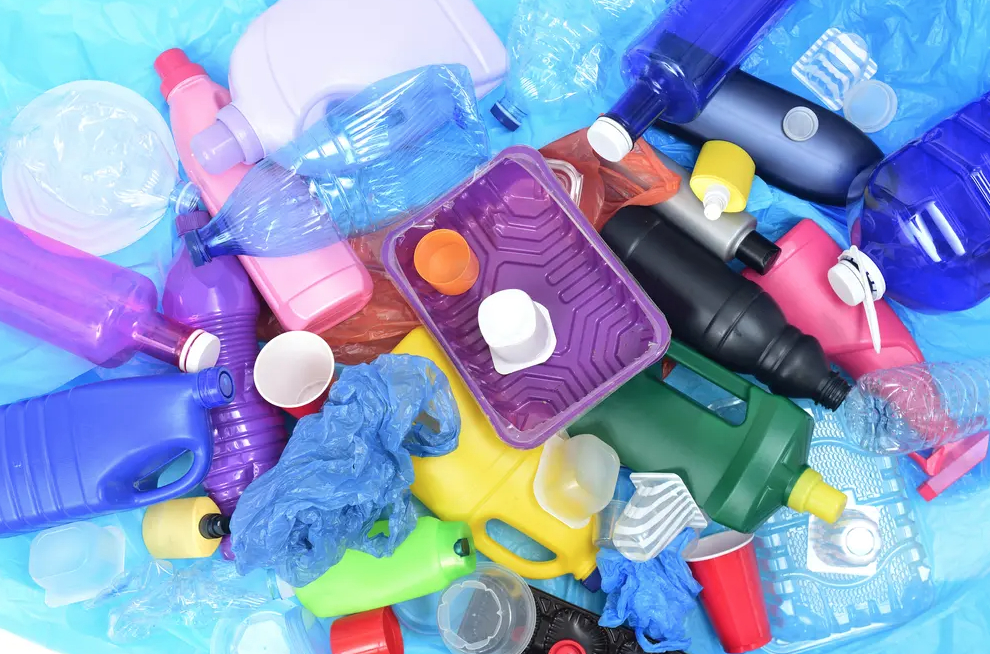The organocatalyst of the Department of Energy selectively deconstructs multiple polymers, making it possible and economical to recycle mixed plastics
(sustainabilityenvironment.com) – Almost 90% goes to landfills or incinerators, generating toxins and greenhouse gases. This is because recycling plastics is a business that few people take on. Usually, in fact, it is simpler and less expensive to make new plastic products rather than recover, differentiate and recycle those used. In order to recycle mixed plastics, a manual or mechanical separation is required according to the constituent polymers.
However, scientists at the Oak Ridge National Laboratory of the US Department of Energy may have found the solution. They invented a catalyst capable of selectively and sequentially deconstructing more polymers that make up the mixed plastic. They can restore them to pure monomers. With this catalyst, waste such as bottles, packaging, foams and carpets may no longer be a problem. The researchers’ analysis, published in Materials Horizons, compared the use of the new multipurpose catalyst with catalysts acting only on one type of plastic. Their invention would generate up to 95% less greenhouse gases, require up to 94% less energy input and would result in a 96% reduction in fossil fuel consumption.
The operation of the process was explained by Tomonori Saito, chemist of synthetic polymers of the ORNL. “Our approach involves a tailor-made, synthetic organocatalyst composed of small organic molecules that facilitate chemical transformations. The catalyst organ can convert lots of mixed plastic waste into precious monomers to be reused in the production of commercial grade plastic and other valuable materials”.
How to recycle the plastics
With this method, it was possible to deconstruct efficiently and quickly more polymers, in about two hours. In particular, it has been tested on materials such as glasses (polycarbonates), foams (polyurethanes), water bottles (polyethylene terephthalates) and fishing ropes or nets (polyamides). Together, these mixed plastics make up over 30% of global plastic production. The process offers many environmental benefits: no more aggressive chemicals are needed to deconstruct polymers, for example. And then it offers good selectivity, thermal stability, non-volatility and low flammability. This flexibility allows to deconstruct the plastic at different temperatures, which facilitates the sequential recovery of individual monomers. Reaction temperature of 130 °C led to the complete conversion of PC poly(carbonate) waste to bisphenol A , while PU poly(urethane), PET, and poly(amide) (PA) waste remained unconverted.
read also The first filter that blocks 99.9% of microplastics in water
Because of its insolubility in ethylene glycol, the unreacted PU poly(urethane), PET, and poly(amide) (PA) waste can be easily filtered off from the reaction solution and proceed with deconstruction in a subsequent reaction. Increasing the temperature to 160 °C resulted in the complete conversion of poly(urethane) foam to methylenedianiline. At an elevated temperature of 180 °C, the PET water bottle is fully converted to BHET. The nylon rope is intact after 160 °C or 180 °C deconstruction conditions; thus, it can be easily separated. When the residue is heated to 210 °C, the nylon rope is fully deconstructed to CPL. Alternatively, we used the TBD:TFA catalyst to deconstruct mixed plastics waste of the same consumer products in the same reactor at 210 °C for 2 h, yielding a mixture of BPA, methylenedianiline, BHET, and CPL.

